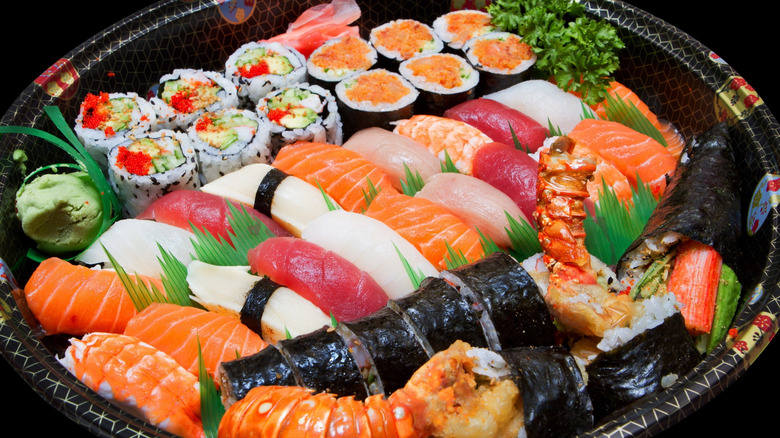Does The Plastic Grass In Your Sushi Container Actually Do Anything?
If you've purchased (or even looked at) store-bought sushi, you might have noticed the plastic grass included in the container. You likely haven't given it a second thought, and why would you? It's bright green and adds more color to an already colorful meal.
Japanese bento boxes are quite well known for their creative displays of food. They're balanced not only in the various food groups, but also in textures and colors. One might have a couple different kinds of fish, some rice, wasabi, and seaweed. An entire bento box trend has popped up on TikTok for those of us who enjoy watching these colorful creations come together.
But why do some of these containers have plastic grass? While you might think it's just there for decor (and you could go on to think that such decor could be wasteful), is that really its purpose? Believe it or not, that plastic grass might actually play a major role in your store-bought sushi's taste and longevity.
The unlikely roles of plastic grass in your sushi container
Although the addition of some fake grass might seem like an American thing, The New York Times reports that it's actually inspired by Japanese tradition. When the Japanese put together sushi containers, they use haran, or fresh leaves, rather than the plastic we see in the U.S.
According to the Japanese Food Guide, these leaves act as a preserving agent, keeping sushi safe to eat for a longer period of time. Haran used in Japan also exudes an antimicrobial agent that keeps bacteria from growing.
The third reason to include the leaves (or plastic grass) is for the barrier, says The Japan Times. Some elements might otherwise overwhelm the entire meal with a single scent or flavor. Haran keeps the fishy taste, for example, from combining with the rice.
With today's landfill problem, you might still be wondering why we're using plastic grass and not something biodegradable. Well, it unfortunately comes down to money. Plastic grass is far cheaper than fresh leaves.

